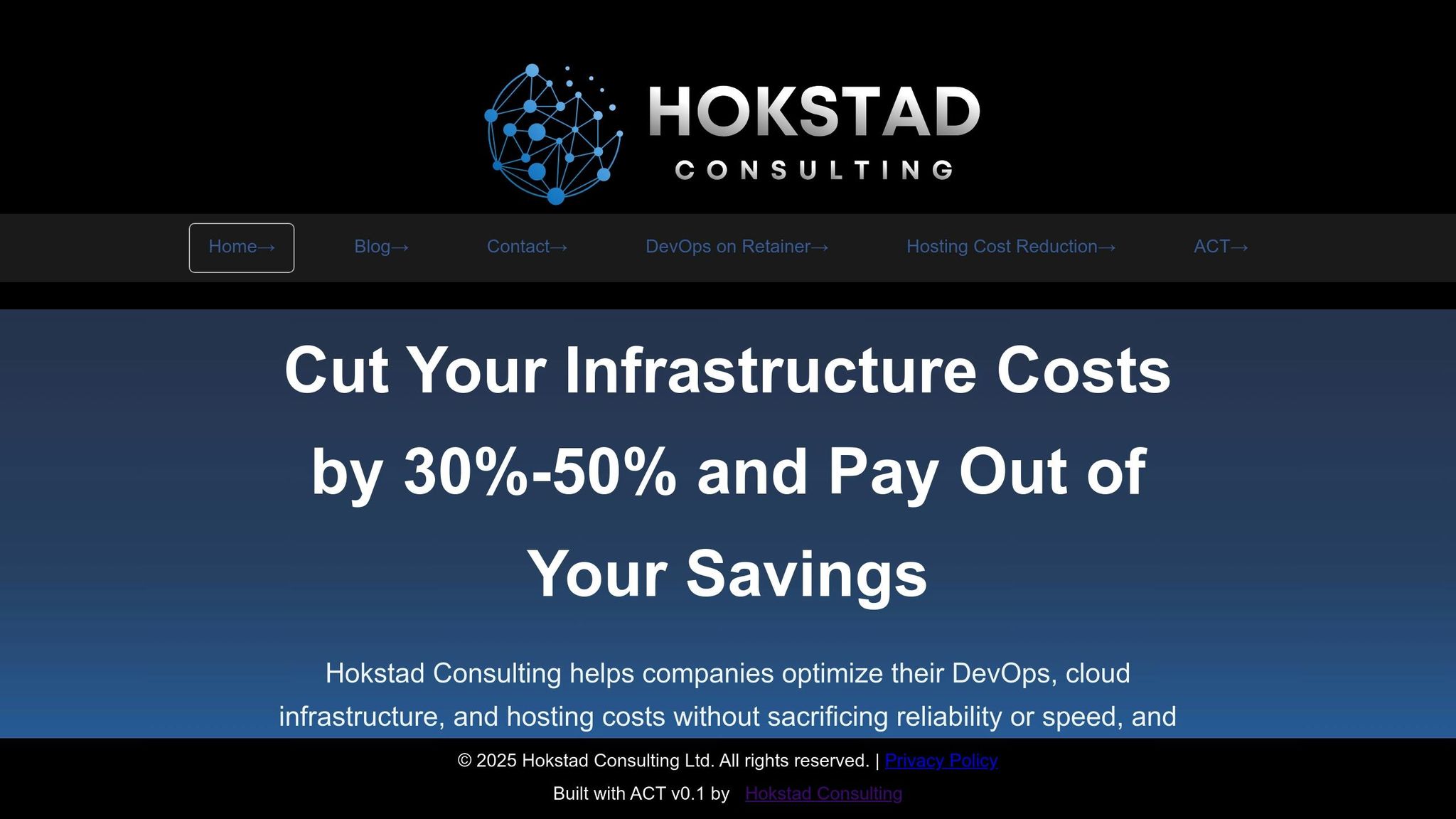Cloud storage costs are rising, but UK businesses can save up to 96% by using deduplication and compression. These techniques reduce redundant data and shrink file sizes, cutting expenses without sacrificing performance. Here's how:
- Deduplication: Removes duplicate data, storing only one instance. Ideal for backups and virtual machine images, it can reduce storage needs by up to 90%.
- Compression: Encodes data more efficiently, reducing file sizes by up to 87%. Best for text files and images.
Key Savings Examples:
- A SaaS company saved £120,000 per month with a 10:1 deduplication ratio.
- Concerto Cloud Services reduced 5.4 PB to 203 TB using NetApp, slashing costs by 96%.
- NTT-Netmagic cut storage by 35%, saving £240,000 annually and speeding backups from 48 hours to 8.
For UK businesses, combining these methods with compliance measures and tools like NetApp or Commvault can lower costs significantly while maintaining data integrity.
NetApp Deduplication, Compression, and Compaction Tutorial

Case Study: NetApp Cloud Volumes Storage Savings
Concerto Cloud Services faced escalating AWS storage costs while managing a hefty 5.4 PB of production data. Enter NetApp Cloud Volumes ONTAP - a solution that completely reshaped their storage strategy and expenses.
Implementation Methods and Techniques
NetApp Cloud Volumes ONTAP employed a mix of advanced techniques like inline deduplication, data compression, data compaction, and thin provisioning to shrink the storage footprint. These were activated through customised efficiency policies, snapshot backups, and cross-region replication. The migration itself was completed within weeks, delivering immediate results. To ensure these efficiency measures didn’t compromise application performance, the team used Quality of Service (QoS) policies and performance monitoring tools. This methodical approach not only improved storage efficiency but also maintained seamless application performance throughout the process [3][4].
Measured Cost Savings and Performance Gains
Thanks to these optimisations, the results were striking. Concerto Cloud Services managed to shrink their storage from 5.4 PB to just 203 TB - a staggering 96% reduction [3]. This drastic decrease translated into substantial monthly savings on AWS storage costs. Beyond cost, the reduced footprint allowed for a tenfold increase in workloads and faster backup operations, all without any dip in performance. Snapshot technology made data replication and disaster recovery more efficient, particularly benefiting high-redundancy workloads such as file shares and VM images. Meanwhile, applications with less redundancy or pre-compressed data experienced more modest gains [3][5].
Another key advantage was compliance. Regular, immutable backups and strict enforcement of data residency and retention policies ensured that UK-specific regulatory requirements were met [3][4].
This case study demonstrates how strategic storage management can drive both significant cost savings and operational resilience.
Case Study: NTT-Netmagic Cost Reduction and Backup Improvements

NTT-Netmagic leveraged Commvault's deduplication and compression tools to achieve notable financial and operational gains. Their transformation from inefficient backup systems to streamlined operations offers insights for UK businesses facing similar hurdles.
Storage Reduction and Cost Savings
By implementing Commvault's deduplication and compression, NTT-Netmagic cut storage consumption by 35%, resulting in annual savings exceeding £240,000 [7].
These technologies work by removing duplicate data across their storage systems and compressing the remaining files, significantly reducing their storage footprint. For NTT-Netmagic, this translated into less data to store, lower ongoing cloud expenses, and improved management of both primary storage and disaster recovery systems. The 35% reduction not only reduced storage needs but also delivered consistent monthly savings.
The benefits went beyond just storage costs. With reduced data volumes, bandwidth requirements for transfers dropped, backup storage demands lessened, and existing infrastructure resources were used more efficiently. For UK businesses dealing with tight budgets, these kinds of savings can help redirect funds towards other critical projects, all while maintaining strong data protection measures. The efficiencies in storage also laid the groundwork for better backup performance.
Backup Process Improvements
NTT-Netmagic achieved a dramatic improvement in backup times, reducing their backup windows from 48 hours to just 8 - a six-fold increase in efficiency [7].
This shorter backup window brought a host of operational advantages. System downtime was significantly reduced, with backups no longer disrupting day-to-day business activities. Data protection became more dependable, as backups were completed within timelines that aligned with operational needs.
The user experience also saw improvements. Employees no longer endured extended periods of system unavailability or slower performance during backups. IT teams gained added flexibility for scheduling maintenance and could respond faster to data recovery requests. The reduced backup duration also made achieving recovery point objectives much easier, ensuring better protection for critical business operations. These combined efficiency gains highlight a practical approach to managing cloud costs and improving operations for UK businesses.
Need help optimizing your cloud costs?
Get expert advice on how to reduce your cloud expenses without sacrificing performance.
Deduplication vs Compression: Performance and Use Cases
Deciding between deduplication and compression can significantly impact storage costs. Each technique tackles the issue differently, and the best choice depends on the type of data you’re working with and your infrastructure setup. Below is a breakdown of their performance and use cases.
Key Differences and Performance Data
Deduplication and compression operate using distinct methods. Deduplication eliminates duplicate data by keeping a single instance and referencing it, whereas compression reduces file size by encoding the data more efficiently [5][6].
Here’s a quick comparison of their performance attributes:
| Technique | Data Reduction Ratio | Computational Impact | Ideal Data Types | Considerations |
|---|---|---|---|---|
| Deduplication | Up to 90% reduction | Lower processing demand | Backups, VM images | Risk of data corruption if reference blocks are lost |
| Compression | Up to 87% reduction (2:1 to 10:1 typical) | May require more processing power | Text files, images | Generally preserves data integrity |
For example, deduplication can achieve ratios as high as 10:1 in real-world scenarios, highlighting its efficiency [2].
While deduplication tends to demand less processing power than compression, it does come with a potential risk: losing reference blocks can lead to data corruption. This makes robust backup and recovery systems essential [5][6].
When to Use Each Technique
Deduplication shines when dealing with highly redundant datasets. Backups and virtual machine images are prime examples, as they often contain multiple copies of similar files. These scenarios make deduplication a natural fit [5].
On the other hand, compression works best with datasets that have lower redundancy. Text files and images, for instance, can be significantly reduced in size through compression without losing any information. This makes it particularly useful for transferring data between cloud services, where reducing file sizes can cut bandwidth costs [5][6]. Additionally, since many cloud providers charge based on storage volume, deduplication can help lower storage expenses, while compression reduces data transfer costs [5][9].
For many organisations, combining both techniques is the optimal approach. By using deduplication to handle global redundancies and compression for local data reductions, businesses can maximise storage efficiency while keeping computational demands in check [6].
In the UK, these methods not only help reduce storage needs but also align with data protection regulations and improve infrastructure efficiency - key priorities under UK data laws [8]. This sets the stage for practical implementation strategies tailored to UK businesses.
Implementation Guide for UK Businesses
Building on the proven savings highlighted in our case studies, this guide provides practical steps for UK businesses to implement deduplication and compression effectively.
Infrastructure and Compliance Requirements
To implement deduplication and compression, UK businesses should rely on cloud storage platforms that support these features. Solutions like NetApp Cloud Volumes ONTAP and Cohesity Cloud Edition are excellent options for this purpose [2][3]. Your existing infrastructure should be capable of handling both inline and post-process operations, while also offering robust monitoring and reporting tools to track cost savings in pounds.
The first step in this process is data profiling. Analysing your current datasets helps identify redundant and compressible content. Regular profiling ensures that your data remains optimised over time [3][5].
When it comes to compliance, adhering to UK data governance standards is crucial. This means meeting the requirements of the Data Protection Act 2018 and GDPR [5]. Deduplication and compression processes must maintain data integrity and comply with retention obligations. Your chosen solution should include encryption, access controls, and audit trails to meet these regulatory standards. Additionally, all data operations must be secure and auditable.
Deduplication does come with risks, particularly around data corruption if reference blocks are lost. To mitigate this, use solutions with robust error-checking capabilities, maintain multiple backups, and thoroughly document and audit all processes [5].
By addressing these compliance and infrastructure requirements, your business can lay the groundwork for significant storage cost reductions.
Methods to Maximise Cost Savings
One key decision is whether to use inline or post-process deduplication. Inline methods reduce costs immediately by processing data as it’s written, while post-process methods are better suited for legacy systems [3][8].
Real-world examples show the financial impact this can have. For instance, one business reported a 38% reduction in IT expenses, saving £14,000 annually [4]. NetApp users have achieved up to a 96% reduction in data, leading to substantial monthly savings visible through cloud billing dashboards and storage analytics [3][4].
Intelligent tiering is another effective strategy. By moving infrequently accessed data to lower-cost storage tiers, businesses can amplify savings. Pairing this with deduplication and compression ensures that the reduced data volumes transfer more efficiently between tiers [3][4].
For businesses using a hybrid cloud setup, deploying deduplication and compression across both on-premises and cloud environments can further optimise costs. This approach reduces redundant data transfers, improves replication efficiency, and minimises storage expenses across all locations [2].
To ensure continued success, businesses should regularly monitor their deduplication ratios and cost savings. For example, Cohesity users typically achieve a 10:1 deduplication ratio, while NetApp implementations can reach up to 96% data reduction [2][3]. Tracking these metrics monthly through your cloud provider’s dashboard will help measure the financial benefits accurately.
By adopting these strategies, your business can unlock significant savings while maintaining operational efficiency.
How Hokstad Consulting Can Help

Hokstad Consulting provides tailored assessments to help businesses uncover cost-saving opportunities within their existing infrastructure. Their expertise in cloud cost engineering focuses on reducing expenses by 30–50%, with deduplication and compression playing a central role in their strategies.
Their process begins with a detailed analysis of your data patterns, storage usage, and compliance requirements. This evaluation identifies the most effective deduplication and compression techniques for your specific needs - whether you’re managing hybrid cloud setups, large backup repositories, or high-volume transactional data.
Hokstad Consulting also offers implementation support, ensuring the chosen solutions integrate seamlessly with your existing DevOps processes and cloud infrastructure. Their experience with hybrid cloud environments is particularly beneficial for businesses operating across multiple platforms, enabling smooth integration of deduplication and compression.
To ensure long-term success, they provide ongoing optimisation services. This includes regular reviews of deduplication ratios, compression efficiency, and compliance adherence. Their detailed reporting tracks actual savings in pounds, providing clear insights into the financial impact.
Hokstad Consulting operates on a No Savings, No Fee
model, with fees capped based on the savings achieved. This ensures their success is directly tied to your cost reduction results.
Conclusion: Getting Results from Deduplication and Compression
Real-world examples highlight how deduplication and compression can lead to major cost reductions in UK cloud expenses. For instance, Concerto Cloud Services managed to shrink their data footprint by an impressive 96% [3], while a SaaS provider saved over £120,000 every month [2]. These numbers clearly show how effective these methods can be for cost optimisation.
On average, businesses have reported cutting their cloud spending by 30–50% [1]. These aren't just theoretical benefits; the financial impact is tangible and proven through practical application.
But the advantages aren't limited to just saving money. Deduplication and compression also improve operational efficiency. Faster backups, quicker recovery times, and better data availability are just some of the operational perks. These improvements contribute to stronger business continuity. In fact, some organisations have seen performance gains of up to five times compared to older systems [2], demonstrating that efficiency doesn’t have to be sacrificed for savings.
For UK organisations looking to optimise costs, the journey should start with data profiling. From there, adopting cloud-native solutions that comply with UK data protection standards is crucial. Leveraging tools like inline deduplication, intelligent tiering, and automated compression can help achieve both short-term savings and long-term efficiency [3][4].
Hokstad Consulting offers a No Savings, No Fee
model, which eliminates risks and delivers consistent savings of 30–50% [1].
As cloud storage costs continue to climb, deduplication and compression stand out as essential strategies for staying competitive. The evidence is clear: these techniques not only reduce costs but also enhance operational performance, making them vital for UK businesses navigating a data-driven landscape. By adopting these methods, organisations can secure their position in an ever-evolving market.
FAQs
How can deduplication and compression help UK businesses reduce cloud costs while supporting GDPR compliance?
Deduplication and compression are smart strategies for optimising cloud storage. Deduplication works by removing duplicate copies of data, ensuring only unique files are kept. This cuts down on storage space, which naturally helps reduce costs. Meanwhile, compression shrinks file sizes, offering another way for businesses to lower their cloud storage expenses.
These techniques also align well with GDPR compliance. By reducing the amount of stored data, businesses can simplify data management tasks, like locating, securing, or deleting personal information when needed. This approach supports GDPR’s focus on data minimisation and accountability, helping organisations manage sensitive data responsibly while keeping costs under control.
What risks can arise from using deduplication, and how can they be addressed?
Deduplication offers a great way to cut down storage costs, but it isn't without its challenges. A key concern is data integrity - if the process misidentifies or mishandles data, it could result in corrupted files or even lost information. Another issue to watch out for is the impact on performance, as deduplication can sometimes slow systems down, especially during busy periods.
To address these risks, it's crucial to use dependable tools and configure them correctly. Regularly verify backups and perform integrity checks to protect against data corruption. Keep an eye on system performance and tweak deduplication settings to find the right balance between efficiency and speed. For a more tailored approach, consulting with professionals, such as cloud cost optimisation specialists, can help you reduce risks while still reaping the benefits of significant savings.
Can deduplication and compression be seamlessly added to existing IT systems without causing disruptions?
Yes, integrating deduplication and compression into your IT setup can usually be done with minimal disruption - as long as it's well-planned and executed. These technologies focus on streamlining data storage and cutting down redundancy, making them a good fit for most systems.
To make the process seamless, start by evaluating your existing infrastructure. Identify tools that are compatible with your setup, and test everything in a controlled environment before rolling it out fully. Working closely with experienced professionals during this phase can help reduce risks and make sure you get the most out of the cost-saving potential.
